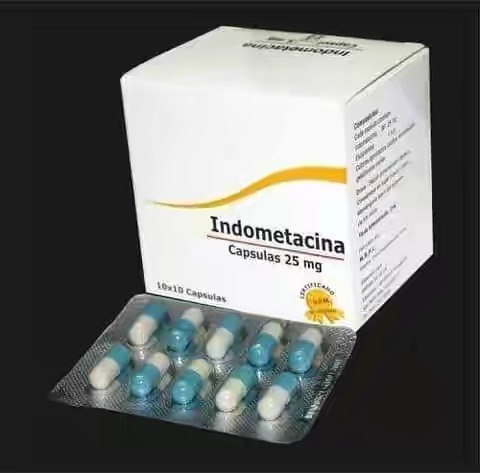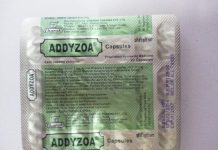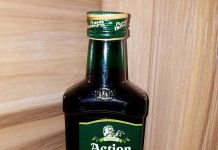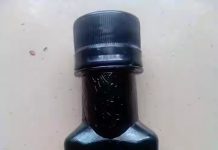INDOMETHACIN (Indocid): The Rat Poison that Relieves Pain in Humans..
But why is indocin or indocid safe in humans but poisonous to rats and other rodents? Why is it that Indomethacin does not kill humans?
Read 👇
PATHOGENESIS AND PATHOPHYSIOLOGY OF INDOMETHACIN.. (Research Based Analysis)
~
LET’S GIVE OUR BRAIN A BURST THIS EVENING… 😎 😎
We say One man food is another man poison. Let’s have a case study of the #INDOMETHACIN (Analgesic to man) Poison to rodents (Rats)
I wants us to look into the Pathogenesis And Pathology Of The Rodenticidal Action Of Indomethacin , A NSAID (Non-steroidal Anti-inflammatory Drug)
#LETS_GO 😎😎
Indocide or Indocin, don’t mind my spelling, that’s just the way we called it as at then has been a rodenticide according to my perception and I know it’s applicable to some of us. Any time the number of rats in our surrounding were getting much, my grandmother would send me Indocid (indomethacin), at the same time if someone is having body pain same Indocid, I was wondering how a poison has therapeutic effects. Now let’s see what happens….
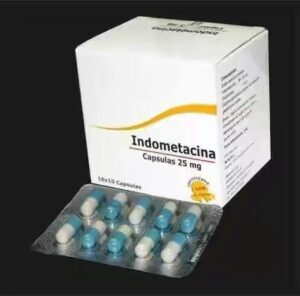
Indomethacin emerged as one of the most extremely potent anti-inflammatory and analgesic medication through non-selective inhibition of cyclo-oxygenase (COX) enzyme which responsible for the conversion of arachidonic acid to prostaglandins thereby controlling pains.
Did you know Indomethacin 50mg is more active than Ibuprofen 600mg? OK Let’s suspend that. Vitamin K is a very important component in blood clotting, its necessary for synthesis of clotting factors VII,IX,X and prothrombin. Indomethacin does kills the rat is by suppressing the growth of Vitamin K in the intestinal tract, where much of it is produced.
With the Vitamin K production halted, it is only a matter of days until the rodent’s Vitamin K stores are completely depleted. 4-hydroxycoumarin and indandione are also anticoagulants that have effect on rats. These chemicals cause trauma to the blood vessel walls, increasing the risk for damage and internal bleeding.
When the rodents begin to bleed internally, there is no Vitamin K available to aid the clotting process. The rodents die, usually within one to two days or 36 to 48hrs, from internal hemorrhaging. This is the preferred type of rat bait, as the antidote to ingestion by animals or humans is Vitamin K and I guess this explains why some rats do not die even after eating the poisoned food if they could find themselves foods rich in vitamin K to eat.
And then we have the annoying odour arising from their decay disturbing our peace again till they are either found and disposed off or dried completely if we can’t find them. Then happy times again……
A recent research by Professor Taiwo et al. In the University of Ibadan, Sixteen Norway rats and 16 albino mice, aged 10-12 weeks with mean mass of 99.6 g and 28.4 g, respectively were divided into eight groups of 4 rats (R1, R2, R3 and R4) and 4 mice (M1, M2, M3 and M4).
Rodents in R1 and M1 were controls (0 mg/kg indomethacin), while those in R2, R3, R4, and M2, M3, M4 were each given 83 mg/kg, 166 mg/kg and 250 mg/kg body mass of indomethacin orally, respectively.
Clinical signs, symptoms and mortalities were monitored, while detailed postmortem examination was carried out. #Indomethacin caused anorexia, dehydration and weakness, which became progressively worse with time; and there was 100% mortality within 36 and 82 hours in mice and rats, respectively. Seven rats (43.8%) were diarrheic, and had bilateral medial canthi haemorrhages. Gross lesions in all the rodents include congested and haemorrhagic stomach and intestinal mucosae, with focal areas of ulcerations, and focal pale areas on the liver.
#Histopathological changes in various organs were similar, irrespective of the animal species and dose of indomethacin, and include widespread congestion and haemorrhage, thrombi in arterioles and capillaries of the kidney, heart, lungs, brain, testes and splenic fat.
There was widespread glandular degeneration and necrosis, erosions, ulcerations in the stomach and small intestines, renal glomerular and tubular degeneration, hepatocellular necrosis, myocardiac necrosis, testicular and neuronal degeneration. Indomethacin appears to cause widespread endothelial and mucosal damage, haemorrhage and vascular thrombosis, leading to ischaemic necrosis, with subsequent multiple organ failure and death.
Human should consume or administer indomethacin with caution, when abused or on prolonged use, it may cause multisystemic pathology like stomach ulcer, kidney injury and intestinal bleeding. Any exposed capsule 💊 or pill should not be used. Please note.
And now I would say knowledge is power. Lets search for it it brings peace of mind….. 😎
#🅡🅔🅜🅐🅘🅝_🅛🅔🅐🅡🅝🅔🅓
#🅑🅔_🅦🅘🅢🅔
#🅢🅣🅐🅨_🅗🅔🅐🅛🅣🅗🅨
#🅢🅣🅐🅨_🅢🅐🅕🅔
These research is the intellectual property of:
🅐🅓🅔🅞🅨🅔 🅐🅓🅔🅦🅐🅛🅔 🅞🅛🅤🅦🅐🅕🅔🅡🅐🅝🅜🅘,➋⓿20

















